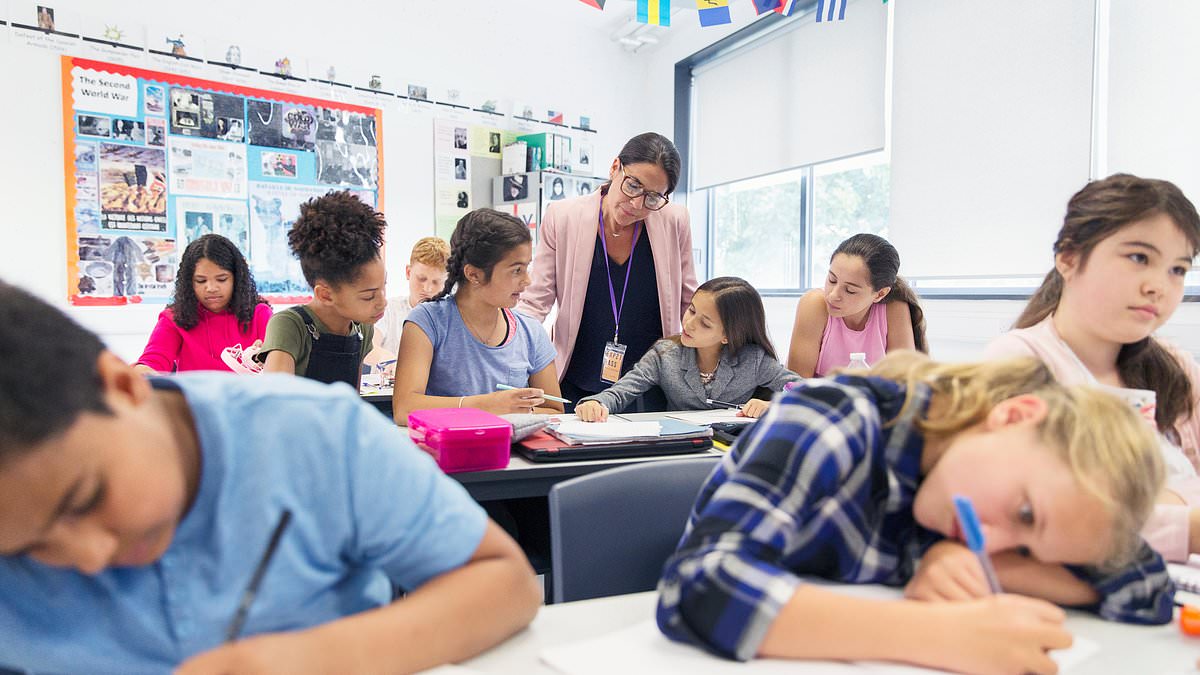Schools across the country could be forced to close as a falling birth rate lowers pupil numbers, warns a report.
They stand to collectively lose more than £1billion in funding by 2030 because they cannot fill their places, according to the Education Policy Institute, a think tank.
The EPI says it will lead to heads taking ‘cost-cutting measures’ and mergers and closures. This will affect primary schools at first, but eventually secondary schools too.
The birth rate is declining despite the fact that the population, largely as a result of immigration, is continuing to grow.
The warning from the EPI comes after a Daily Mail investigation found hundreds of schools may close in the next six years, with dozens already at risk.

Schools stand to collectively lose more than £1billion in funding by 2030 because they are struggling to fill their places, a report has warned (Stock Image)

Pupil numbers are projected to fall the most in London and the North East, according to the Education Policy Institute (Stock Image)
The population of primary school children is expected to drop by more than half a million by 2030, the equivalent of 17,000 classes or 1,800 schools. This is due to the end of the baby boom of the early part of this century.
Pupil numbers are projected to fall the most in London and the North East, according to the EPI. Robbie Cruikshanks, researcher at the EPI, said: ‘The scale of change projected in the pupil population presents major policy challenges.
‘Most school funding is allocated on a per-pupil basis. As a result, falling pupil numbers can mean lower budgets for schools, whilst not lowering costs in the same way, given these are largely fixed.’
Researchers used data from pupil projections and the EPI’s own funding model. Under a scenario where schools receive a 0.5 per cent real terms increase in per-child funding each year, overall spending would fall to £41.6billion by 2029/30, down from a peak of £42.7billion in 2024/25.
School leaders’ union, the NAHT, urged the Government to take a ‘long-term view’ and not close small schools that may one day be needed again.
A Department for Education spokesman said the figures were speculative and added: ‘It is for local authorities and academy trusts to balance the supply and demand of school places.’
